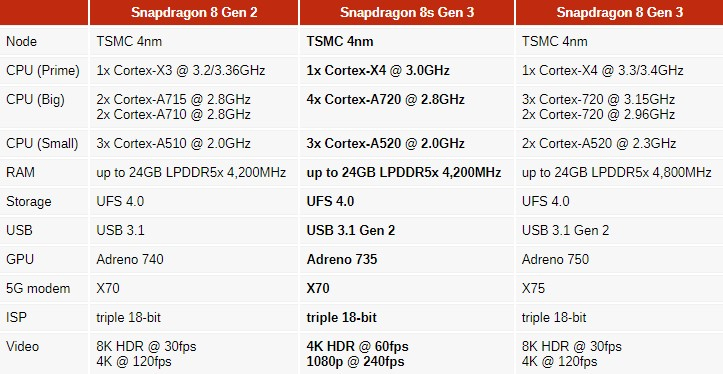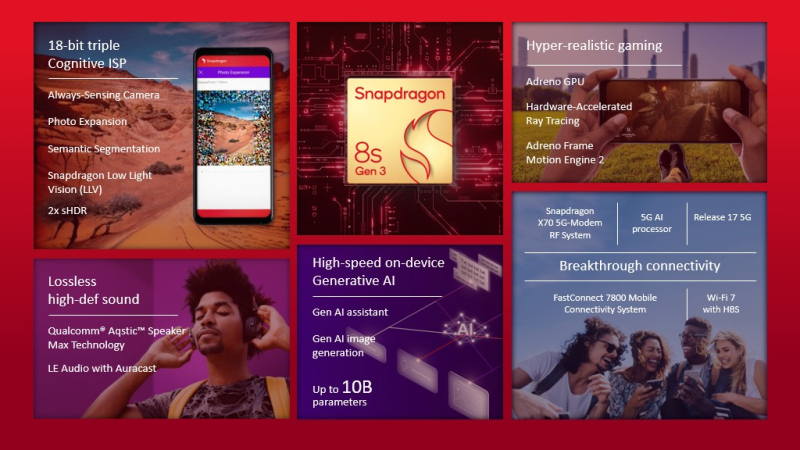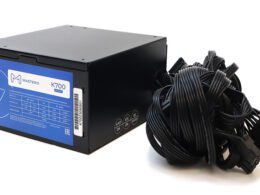Qualcomm has unveiled the Snapdragon 8s Gen 3 mobile processor, an affordable variant of the flagship Snapdragon 8 Gen 3 chipset. Although it operates at lower clock frequencies, the new processor retains many advanced features found in Snapdragon 8 Gen 3 and Snapdragon 8 Gen 2 chipsets.
Hardware and Performance
The Snapdragon 8s Gen 3 features a 1+4+3 core configuration, as opposed to 1+5+2 in the regular Snapdragon 8 Gen 3. The new chip includes a single Cortex-X4 core operating at 3.0 GHz, four Cortex-A720 cores at 2.8 GHz, and three Cortex-A520 cores at 2.0 GHz. It supports up to 24 GB of LPDDR5X RAM with a frequency of up to 4200 MHz, and UFS 4.0 flash memory. The regular Snapdragon 8 Gen 3 offers higher core clock frequencies and support for faster RAM.

Connectivity and AI Features
The new Snapdragon 8s Gen 3 contains the Snapdragon X70 5G modem, also used in the previous generation Snapdragon 8 Gen 2 chipset. However, Qualcomm notes that this chipset’s modem meets the 3GPP Release 17 standard and supports energy-saving functions for 5G. The new processor is also compatible with Wi-Fi 7. Furthermore, it supports wireless streaming of 15-bit sound with a frequency of 44.1 kHz, including support for Auracast.

All AI functions found in the Snapdragon 8 Gen 3 are maintained in the new chip. It is capable of working with most popular AI models, including Llama 2, Baichuan-7B, and Gemini Nano, with up to 10 billion parameters. The new chipset’s AI performance is lower than the regular Snapdragon 8 Gen 3 but higher than the Snapdragon 8 Gen 2.
Photography and Video Capture
The new processor offers exceptional photographic and videographic capabilities, thanks to the retained 18-bit triple-specialized signal processor (ISP), which works in tandem with the Hexagon NPU for image and video processing. It also supports face unlocking and QR code scanning technologies. Furthermore, the combination of the ISP and NPU enhances low-light photography and provides various editing features.

The Snapdragon 8s Gen 3 supports up to three 36-MP cameras with Zero Shutter Lag for high-speed shooting of moving objects at a rate of 30 frames per second, or one 108-MP camera at 30 frames per second with Zero Shutter Lag. The maximum image resolution captured is 200 MP. The chip supports HEIC and HEVC 10-bit 4K HDR video capture at up to 60 frames per second. However, it lacks the 8K@30fps and 4K@120fps recording modes found only in higher-end Snapdragon 8 Gen 2 and Snapdragon 8 Gen 3 processors.
Gaming Potential
The gaming capabilities of the Snapdragon 8s Gen 3 (SM8635) are notable. The processor equips an efficient Adreno 735 graphics core which supports hardware acceleration ray tracing. The Adreno Frame Motion Engine 2.0 technology doubles the frame rate without increasing power consumption, while the Snapdragon Game Super Resolution escalates the image to a higher resolution.

The new processor can operate with QHD+ displays with a refresh rate of up to 144 Hz, or 4K displays refreshed at 60 Hz. It also supports variable refresh rate (VRR) ranging from 1 to 240 Hz. In addition, it supports external displays with up to 8K resolution refreshing at 30 Hz, or 1080p panels at up to 240 Hz. The chipset also supports H.265 and AV1 video decoding (up to 4K at 60 frames per second) and HDR video playback (HDR10+, Dolby Vision, HLG).
Manufacturers’ Response
Several key Android smartphone manufacturers, including Honor, iQOO, Realme, and Xiaomi, are prepared to employ the Snapdragon 8s Gen 3 in some of their forthcoming models set to be introduced “in the coming months”.





